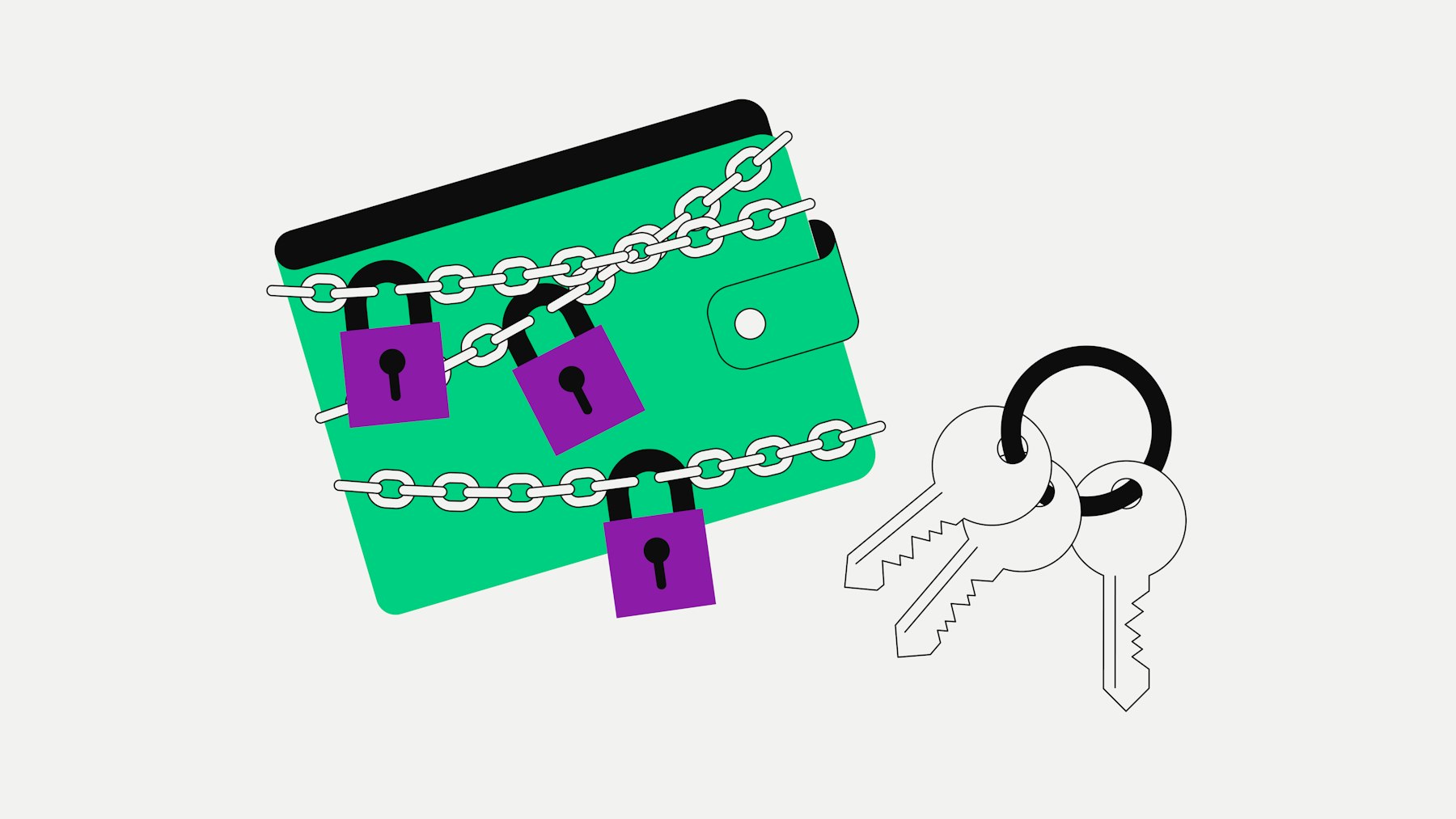Like you learned in the Bitpanda Academy for beginners, a cryptocurrency wallet is a digital or analog storage solution that a crypto holder needs to access their cryptocurrencies. Fundamentally speaking, two elements are essential in a (single signature) crypto wallet mechanic.
The first is a public key, which is like a bank account number. The hashed version of a public key is the owner’s wallet address. To access and control the funds, a user needs a private key which is like the PIN code for that bank account. For this reason, it is crucial that only the crypto holder knows the private key - to ensure sole access and full control of the crypto holdings associated with this address.
Where do single-signature crypto wallets fall short?
Always bear in mind that crypto wallet safety should be of paramount importance, with funds kept offline and inaccessible to third parties in cold wallets being the safest way of storage.
However, with any type of traditional single signature (“singlesig”) crypto wallet, the theoretical risk still exists that if someone is able to steal a private key from your computer (aka a “hot wallet”) or even your cold wallet (offline storage), they could possibly establish ownership over your crypto.
If you know that a traditional cryptocurrency wallet has one private key, then you can think of it as a “single key” wallet or a wallet that requires a “single signature” to authorise transactions.
What are multisig wallets?
If you know that a traditional cryptocurrency wallet has one private key, then you can think of it as a “single key” wallet or a wallet that requires a “single signature” to authorise cryptocurrency transactions. Multisig wallets on the other hand require at least two private keys to sign a transaction, making them more secure than single signature wallets. What does this mean in practice?
First of all, multisig wallets don’t only bring increased security to teams and organisations that need to manage shared assets and execute multiple party transactions but also to individual crypto holders: one crypto user can also hold multiple private keys (“signatures”) for a wallet, further mitigating the risk of someone accessing their crypto holdings if several signatures are required as some multisig wallets offer integration of private keys of other wallets.
And then multisig wallets are a highly secure crypto storage option for groups or organisations that are spread across the world looking to administer funds in trustless environments where the involved parties don’t know each other in person.
How can I create a multisig wallet?
In general, setting up a multisig wallet is not much more complicated than creating a singlesig wallet. After selecting your co-signers or how many people you want to share the wallet with, you just add participants to a wallet with a few clicks and also select how many signatures you want to be required for a transaction to be valid, which is synonymous with how many private keys your wallet will have. Of course you can also use those as extra layers of security if you are using the multisig wallet on your own.
Multisig wallets are a highly secure crypto storage option for groups or organisations that are spread across the world looking to administer funds in trustless environments where the involved parties don’t know each other in person.
Also, all co-signers need to know the password called the “master public key” to access a shared multisig wallet. The difference between the master public key and a traditional public key is that you need to share it with everyone who is your co-signer to make the wallet truly “multisig.” After co-signers have agreed to confirm that they want to “join”, the multisig wallet will indicate how many participants need to sign a transaction for it to be acceptable.
